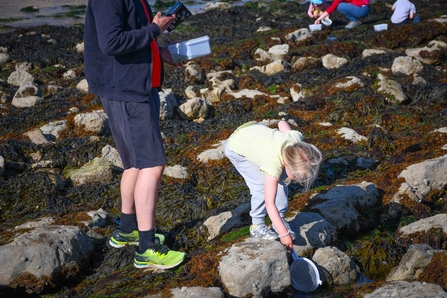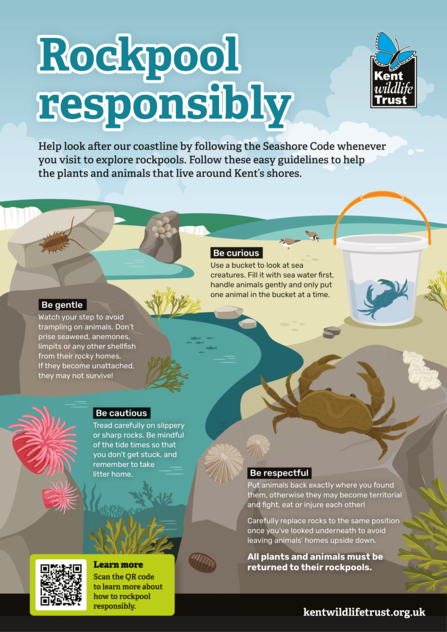Rockpooling is a fantastic activity that people of all ages can enjoy and with summer in full swing, there's no better time to explore the rocky shores of Kent’s coastline. Peer closely into the small pools that are exposed as the tide retreats, and you will get a glimpse of this mysterious world and the weird and wonderful wildlife that inhabits it. Time your trip to the beach right and you could find yourself and your children occupied for hours.
Rockpools occur on most rocky shores across the UK but Kent is a particularly fantastic place to go rockpooling thanks to the extensive coastline of chalk cliffs. As the chalk cliffs are eroded over time, this process leaves behind a chalk reef or platform which is a wonderful habitat for spotting interesting seaweeds and other flora, a variety of animals including fish, molluscs and crustaceans and even coastal birds that feed on these animals. There are even some rocky shore species unique to Kent such as some algae only found on the chalk reef on Thanet.
Twice a day, small pools are submerged by the rising tide and twice a day they are exposed as the tide retreats. Wildlife which lives in these environments have evolved to cope with a wide range of conditions including high salinity, changing temperature, water pressure, desiccation (the removal of moisture), rough seas and being trapped for periods of time in small pools with potential predators. The adaptions of these creatures are fascinating and makes spotting wildlife even more special.
Some of our favourite places to explore the rocky shores are St Margrets Bay, Folkestone and the beaches of Thanet. Wherever you decide to go rockpooling, there are some rules to follow in order to avoid causing harm to wildlife and to keep yourself safe at the same time.







